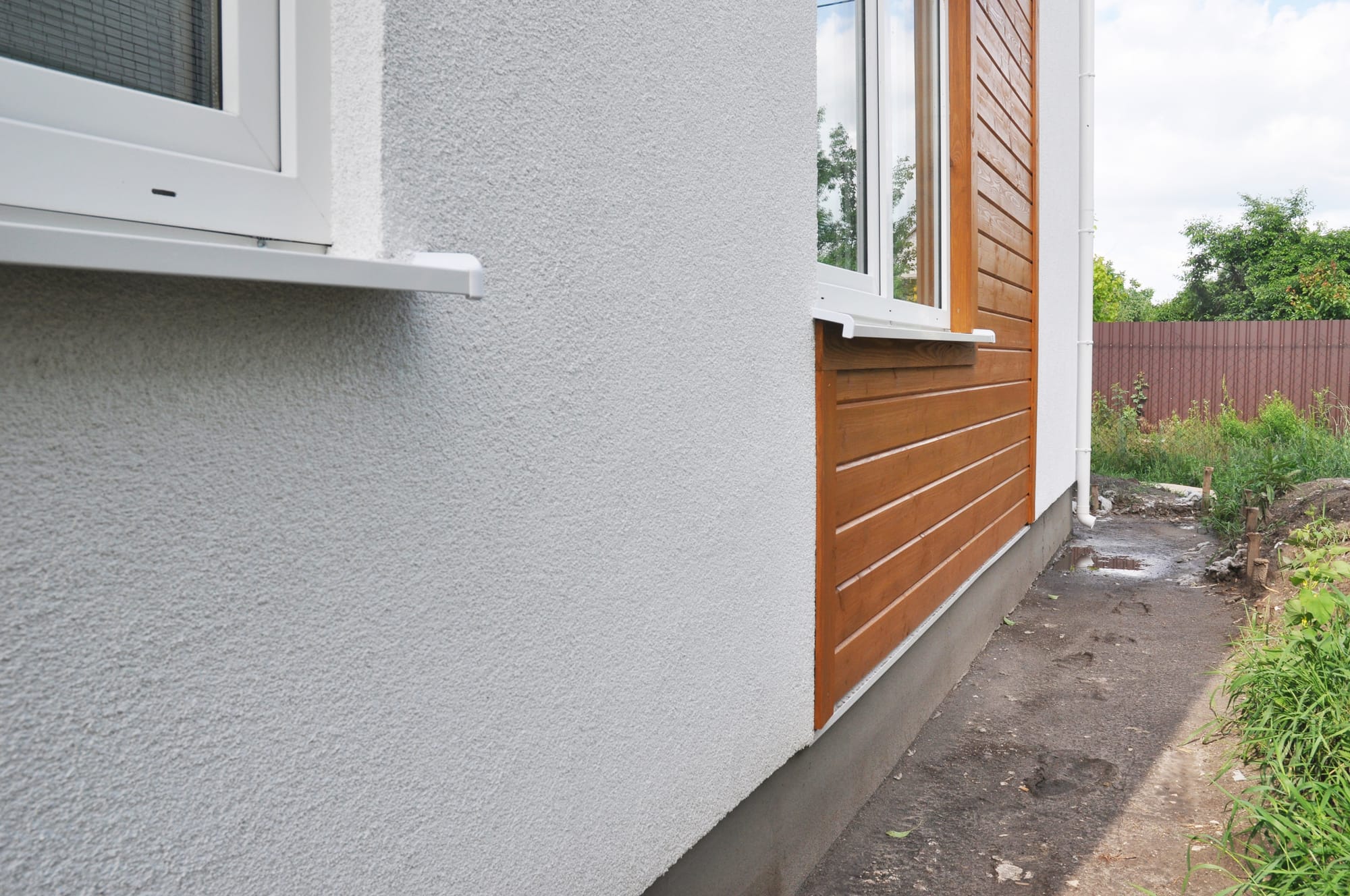Myth or Fact? Stucco Can’t Be Painted Without Cracking

Key Features
- Elastomeric Paint for Flexibility: Elastomeric paint stretches with the stucco, preventing cracking as the material expands and contracts.
- Importance of Proper Preparation: Cracks can be avoided by patching and priming before applying paint.
- Breathable Paints: These allow moisture to escape, preventing peeling or bubbling.
Can Stucco Be Painted Without Cracking
If you’ve ever owned or worked on a stucco home, you’ve likely heard the claim: “Stucco can’t be painted without cracking.” As a professional in the field, I’ve encountered this myth more times than I can count. Let’s break it down and determine whether there’s any truth to it—or if it’s just an old wives' tale.
Understanding Stucco: What Makes It Unique
Stucco is a cement-based material, commonly used as an exterior finish for homes. Its popularity stems from its durability, fire resistance, and ability to add texture and character to buildings. However, stucco does have some quirks.
- Stucco’s Porous Nature: Because stucco absorbs moisture, it needs a proper finish to protect it from weathering.
- Natural Cracking: Over time, small cracks can form in stucco due to temperature fluctuations and natural settling. These cracks are usually superficial but can become a concern if moisture seeps in.
Now, the question remains: Can you paint stucco without causing cracks, or is this just a myth?
Things to Know
- Use Elastomeric Paint: It stretches with the surface, preventing cracks.
- Patch Cracks First: Always repair existing cracks before applying paint.
- Apply a Primer: A masonry primer ensures proper adhesion and durability.
- Choose Mild Weather: Avoid painting in extreme heat or cold for the best results.
- Plan for Long-Term Care: Inspect and repaint stucco every 5 to 10 years for optimal performance.
Why Does Stucco Sometimes Crack After Painting?
The source of the myth likely comes from cases where painting stucco led to noticeable cracks. But here’s the truth—it’s not the paint itself that causes cracking. Cracking typically occurs when proper preparation and techniques aren’t followed. Let’s explore the main reasons:
- Existing Cracks Not Repaired: If cracks in stucco aren’t repaired before painting, they’ll likely worsen over time and become more visible under the new paint.
- Using the Wrong Paint: Stucco requires breathable, flexible paints. If a rigid, non-breathable paint is used, it can trap moisture, leading to cracking and peeling.
- Skipping Primer: Applying paint without a suitable primer can prevent proper adhesion, causing the paint to crack and peel as the stucco expands and contracts.
In short, it’s not painting stucco that causes cracks—it’s improper preparation that leads to trouble.
The Right Way to Paint Stucco Without Cracking
Now that we’ve debunked the myth, let’s talk about how to paint stucco the right way. With a few key steps, you can ensure your stucco finish remains crack-free and beautiful for years.
Step 1: Repair Existing Cracks
Before you paint, inspect the stucco for any cracks. Use stucco patching compound or elastomeric caulk to fill in these cracks. This will prevent them from worsening under the new paint.
Step 2: Choose the Right Paint for Stucco
When it comes to painting stucco, elastomeric paint is your best friend. Elastomeric paints are flexible and designed to stretch, which allows them to move with the stucco as it expands and contracts.
- Breathability: Look for breathable paints that allow moisture to escape, reducing the risk of bubbling or peeling.
- Weather Resistance: Elastomeric paints are also resistant to moisture, making them ideal for stucco surfaces exposed to rain and humidity.
A high-quality masonry primer is also essential to ensure the paint adheres well to the stucco surface.
Step 3: Apply the Paint Correctly
Proper technique is just as important as product selection when painting stucco. Here are a few best practices to follow:
- Use a Sprayer or Roller: A paint sprayer or a thick roller designed for textured surfaces works best for stucco. This ensures even coverage across the rough surface.
- Apply Two Coats: For maximum durability, apply two coats of paint. The first coat acts as a base, while the second coat ensures full coverage and color depth.
- Paint in the Right Weather Conditions: Avoid painting in extreme heat or cold, as these conditions can affect how the paint cures. Mild, dry weather is ideal.
In Our Experience
"We've seen firsthand that stucco can be painted without cracking—when done right. The key lies in preparation. Repairing cracks before painting and using elastomeric paint ensures a long-lasting finish. Working with the right products and methods has saved many of our clients from future maintenance headaches."
Does Stucco Need to Breathe?
A common concern about painting stucco is that it needs to “breathe.” While stucco does benefit from being able to release trapped moisture, modern breathable paints allow this to happen. As long as you use paint designed for stucco, there’s no risk of suffocating the material.
How to Prevent Cracking Long-Term
Even if you’ve painted your stucco properly, ongoing maintenance is essential for preventing future cracks. Here are a few tips for long-term stucco care:
- Regular Inspections: Check for any cracks or damage at least once a year, especially after harsh weather conditions.
- Repaint When Necessary: Stucco should be repainted every 5 to 10 years to maintain its appearance and protect it from moisture.
- Seal Windows and Doors: Ensure that all openings are properly sealed to prevent water from seeping behind the stucco and causing damage.
Verdict: Myth or Fact?
So, does painting stucco without cracking remain a myth or fact? It’s a myth. Stucco can absolutely be painted without cracking—as long as you follow the right preparation steps and use the appropriate products. Cracking only occurs when the process isn’t executed correctly, which is why working with professionals or following best practices is essential.
Painting stucco offers more than just cosmetic value—it helps protect your home from the elements, extending the life of the stucco itself. With elastomeric paint and proper application, your stucco will look great and stay crack-free for years to come.
Do You Have Questions? Give Us A Call With Any & All! 503-389-5758
-
People Also Ask:
Can painting stucco cause cracks?
No, cracks occur when the surface isn’t prepared correctly or the wrong paint is used. Proper preparation and flexible paints prevent cracking.
What type of paint is best for stucco?
Elastomeric paint is ideal for stucco due to its flexibility, breathability, and moisture resistance, allowing the stucco to expand and contract without cracking.
How do you prepare stucco for painting?
Repair any existing cracks, use a breathable masonry primer, and apply the paint with a sprayer or textured roller for even coverage.
-
SUBSCRIBE TO OUR BLOG: Stay informed with the latest in Painting and DIY projects by subscribing to Lightmen Painting. Get insights, tips, and more delivered straight to your inbox. We would also love to know what you would like to read about, leave thoughts on where we should go next. Interests, Topics, Ideas, all are welcome.
Get $3000 in assistant credits from Magic
^ Click Our Logo Above ^
If your in the Portland, Or. area and need advice or a free no obligation estimate call us at 503-389-5758 or email scheduling@lightmenpainting.com
Shout Out:
Celebrating Alignable: Connecting Businesses for Success
From the team at Lightmen Painting, we extend our highest praise to Alignable for providing a platform that fosters strong business connections and collaboration. Just as we strive for excellence and professional relationships in our painting services, Alignable helps businesses grow by facilitating meaningful connections and knowledge-sharing among professionals. Their commitment to empowering local businesses aligns perfectly with our mission to deliver top-tier painting solutions while building lasting partnerships.
Thanks for stopping by Lightmen Daily! Stay tuned for more practical tips and expert advice on making your painting projects flawless, from wall to floor!
Definitions
- Stucco: A cement-based exterior finish that offers durability and texture.
- Elastomeric Paint: A flexible paint designed to move with surfaces and resist cracking.
- Breathable Paint: Paint that allows moisture to escape, reducing the risk of bubbling.
- Masonry Primer: A base coat designed to help paint adhere to porous surfaces like stucco.
- Crack Prevention: The practice of using proper techniques and materials to avoid cracking.
- Weather Resistance: The ability of paint to withstand moisture, heat, and cold.
- Textured Roller: A roller designed for use on rough surfaces like stucco.
- Patching Compound: A material used to fill and repair cracks in stucco.
- Repaint Cycle: The frequency with which surfaces should be repainted to maintain durability.
- Suffocation Myth: The misconception that painting stucco prevents it from “breathing.”
Lightmen Painting Serving: Portland, Tigard, Lake Oswego, Tualatin, West Linn, Milwaukie, Sherwood, Happy Valley, Oregon City, Beaverton, Hillsboro, Gresham -Trade Partners-

